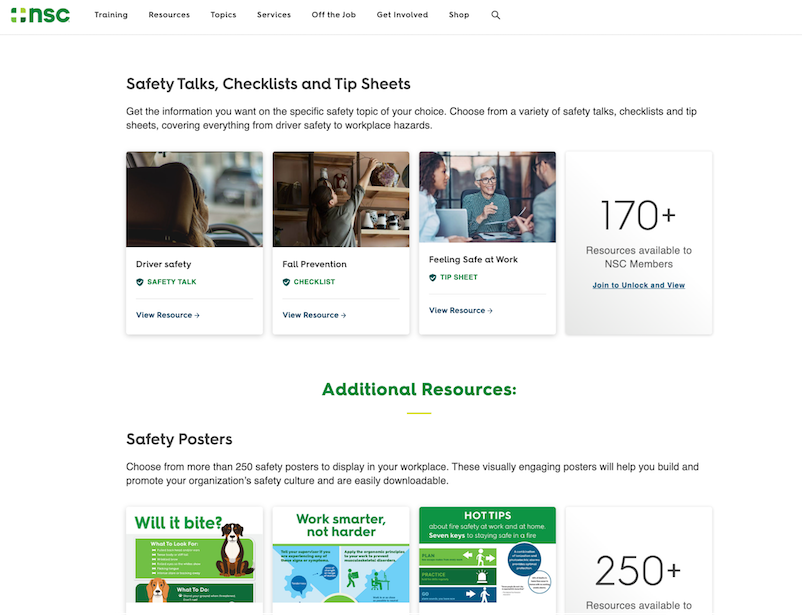Many free and paid workplace safety program templates and resources are available online. And some of them allow you to customize content for your industry or business. Some of these include:
4. Schedule regular and consistent training sessions
Schedule regular training sessions, whether it’s a weekly “toolbox talk” with your crew or a few minutes at your monthly staff meeting. Communicate these training sessions in advance. Ensure that all employees participate, regardless of their experience or role.
Develop onboarding training for new hires and periodic refreshers for current employees. Use varied training formats like workshops, group sessions, online courses and practical drills to keep employees engaged.
5. Regularly evaluate and improve your training
Evaluate the effectiveness of your training sessions. Track incidents, employee attendance and employee feedback. Hold regular meetings to discuss safety performance and areas that need improvement. Keep training dynamic and responsive. Adjust training based on real-world feedback and results.
6. Maintain training records
Good documentation supports compliance and improvement. Use a digital solution for easy access and updates.
Keep thorough records of every training session, including dates, topics covered, participants and any feedback. When an incident occurs, record what happened and the actions you took.
Best practices for workplace safety for small businesses
Enhance your employee safety training program with these practical tips:
- Schedule regular refreshers. Reinforce training frequently to maintain awareness.
- Keep it interactive and hands-on. Engage employees actively through practical exercises.
- Use clear, simple communication. Use plain language and visual aids.
- Encourage feedback. Actively seek and implement employee suggestions.
- Build a positive safety culture. Involve employees in training and regularly acknowledge safe behaviors.
- Conduct safety drills. Regularly practice emergency procedures to ensure quick, effective responses during actual emergencies.
- Provide appropriate Personal Protective Equipment (PPE). Make sure employees always have easy access to proper PPE when needed, and that they’re trained on proper PPE usage.
Learn more about workplace safety tips every business owner should know
Workplace safety training FAQs
Here are answers to some frequently asked questions small business owners have about workplace safety training.
Is workplace safety training mandatory for all businesses?
Generally, OSHA regulations apply to nearly all private-sector employers and their employees, regardless of business size or industry. However, specific training requirements can vary based on your industry’s unique hazards. This means most small businesses must implement some form of workplace safety training to stay compliant and avoid penalties.
How often should small businesses conduct safety training?
OSHA recommends at least once a year, with additional sessions when new equipment, processes or risks appear in your workplace.
Who needs to participate in safety training?
Everyone on your team — from your newest hire to management — should be involved to ensure consistent safety practices.







